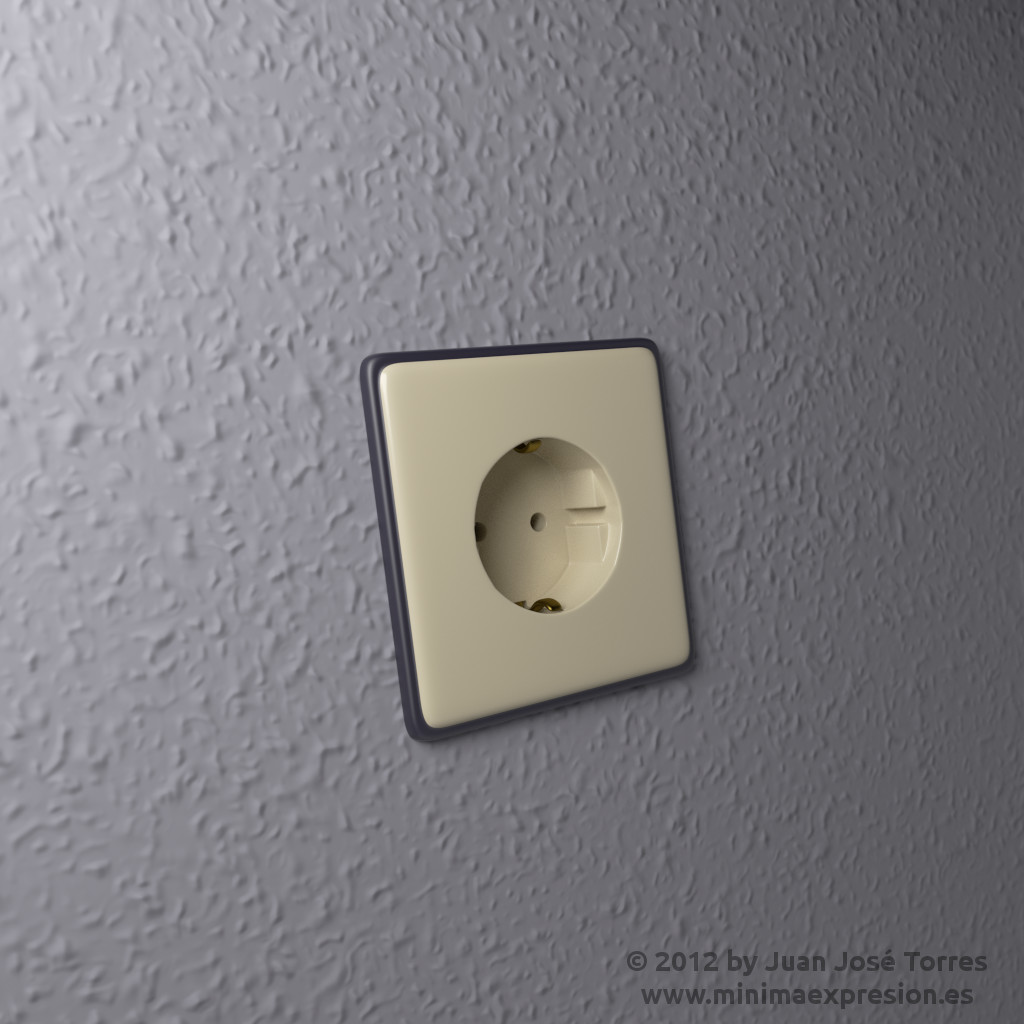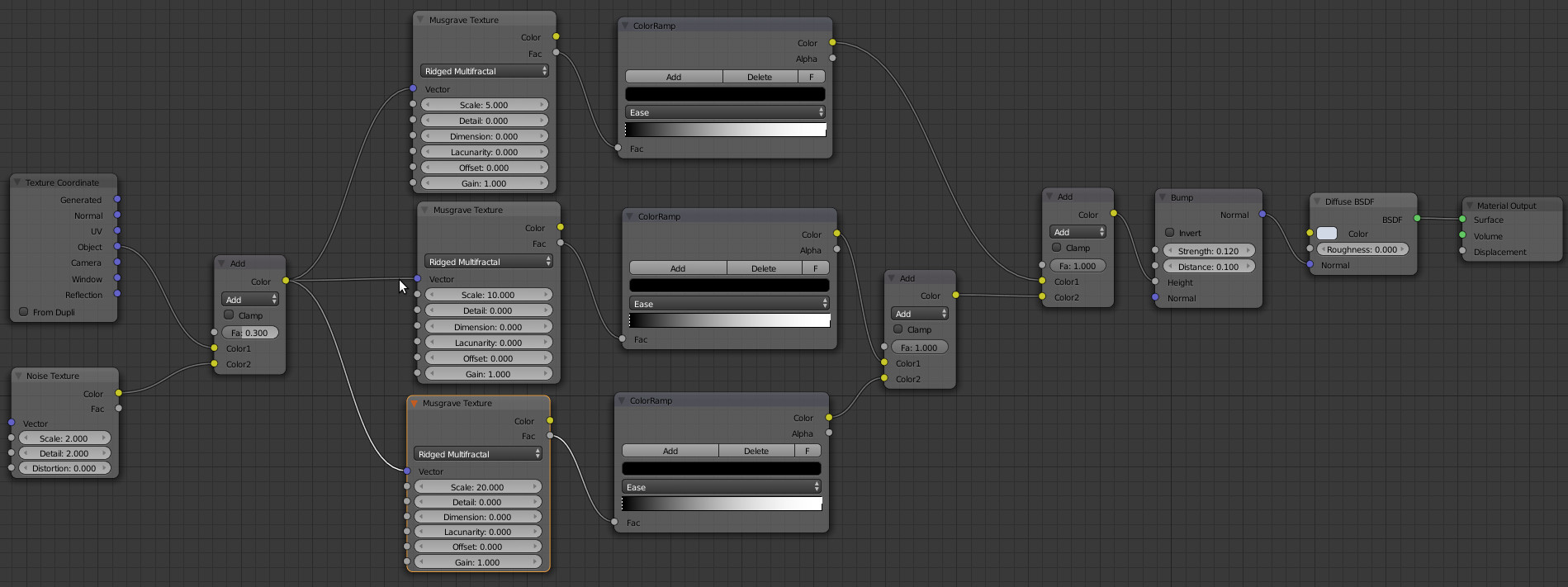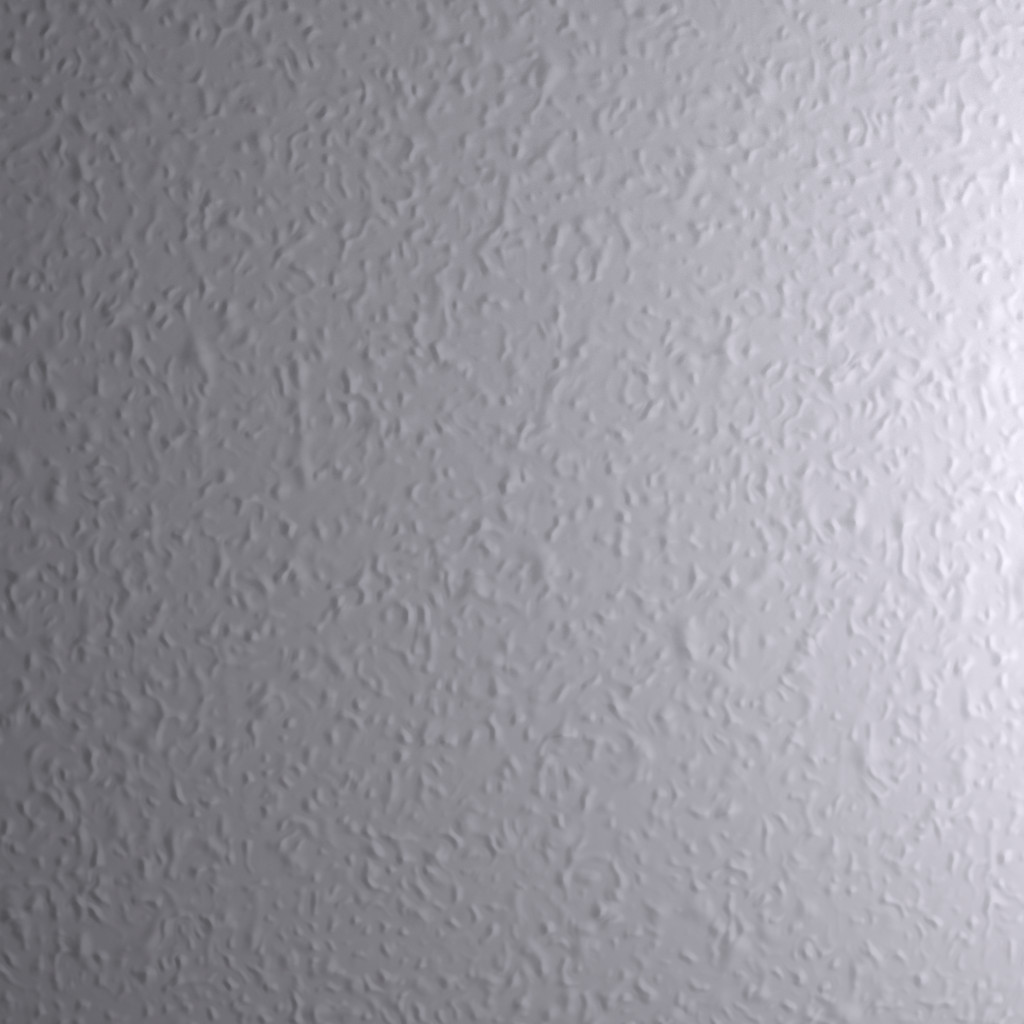You might have noticed the stippled finish in the background wall I used for my last scene. Stippled finish paint was very popular back in the eighties, so I created this material to get an old fashioned feel that would fit the vintage hardware portrayed in the scene.Los lectores de este blog posiblemente hayan notado el gotelé en la pared del fondo de mi última escena. El gotelé era muy popular en la decoración de hogar de los ochenta, de modo que decid, de modo que decidí crear este material con el fin de obtener un ambiente retro que encajara con los dispositivos mostrados en la escena.
For the creation of this material I relied solely on procedural textures, so I have decided to release it as part of my Surface Knowledge series of fully procedural materials. Now you can use it to get this look in your scenes:
As you can see in the screenshot below, the node setup is fairly simple compared to some of my other procedural materials:
And here is the .blend file so you can freely use this material in you project:
http://www.minimaexpresion.es/blend/Stippled_Finish_1.0.blend
Tiling in this file is optimized for GPU rendering, so you might want to adjust tile sizes in the performance section if you are rendering on the CPU. The rendered output of the .blend file should look like this:
That’s all for now. Stay tuned for more Surface Knowledge. 😉
Puesto que en la creación de este material he utilizado únicamente texturas procedurales, he decidido publicarlo como parte de mi serie de materiales completamente procedurales, Conocimiento Superficial. Cualquier podrá ahora conseguir este aspecto para sus escenas:
Como se puede comprobar en la captura de debajo, la configuración de nodos es bastante simple en comparación con otros de mis materiales procedurales:
Y aquí está el enlace para descargar el material y utilizarlo libremente en cualquier proyecto:
http://www.minimaexpresion.es/blend/Stippled_Finish_1.0.blend
El enlosado en este fichero está optimizado para el renderizado a través de GPU, por lo que es posible que sea necesario ajustarlo para poder renderizar con CPU a una velocidad aceptable. La escena contenida en el fichero .blend debería tener este aspecto al renderizarse:
Eso es todo por ahora. Permanezcan en sintonía para más Conocimiento Superficial. 😉




Extremadamente realista. Felicidades. Y gracias por la información. Seguro que es utilizada por mucha gente.
Gracias. Eso espero, eso espero… 🙂
It is extremely realistic. Congratulations.
And thank you for the information. Sure that many people will use it. 😉
Great work! Thank you for sharing
Thanks. 🙂
You are welcome. I just hope you enjoy using this material in your projects.
Nice threat. Is it possible to detail out a bit what each of the nodes does for those who are not that familiar with it? I mean copying is not a problem, but it’s about to learn right? 🙂
Andreas
When I find the time I’ll try to explain node function in better detail. Takes much longer that it seems to explain these things.
I can imagine 🙂 I mean not the node editor in detail, but more why those nodes actually bring this results.
Besides that, I’ll definitely play around with the rusty one. This one is awesome 😛
Your work is just wonderful, and of course the idea behind it! All of the
vour published skins are extremely realistic. I am sure that not only myself
appreciate it and many will use it. Thanks very much for sharing.
Thank you for your kind words. 🙂
Pingback: Blender | Pearltrees
Great Work!!
I would like to see procedural watermelon, could you give a try to make it?
many thanks!
Hmmm, that sounds like an interesting challenge. I might give it a thought or two. No promises, though… 🙂
En estos momentos estoy viendo como aprovechar esto para usarlo en otros motores de render (de momento no uso Cycles, más adelante me adentraré, cuando aprenda más), en mi caso, Blender Render y Yafaray.
Está muy realista, puedo comprobarlo de primera mano, ya que tengo una pared justo delante mío con gotelé del auténtico. Sólo he tenido que hacer un par de ajustes en el nodo «noise» para que se aproxime un poco más.
Gracias por compartirlo. Un saludo.
Gracias por la información. ¿Exactamente, qué ajustes has tenido que hacer a la textura de ruido? ¿La escala tal vez?